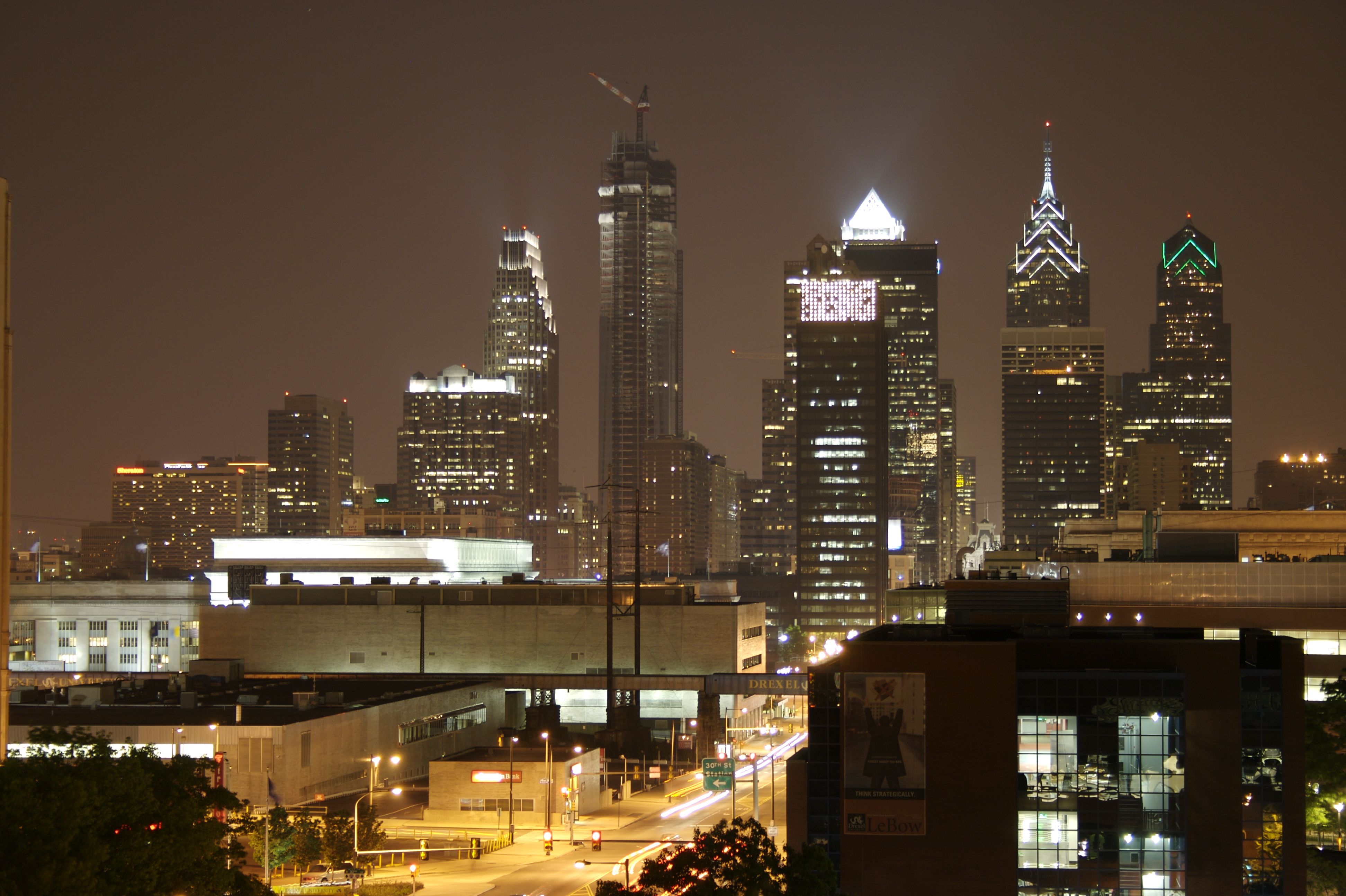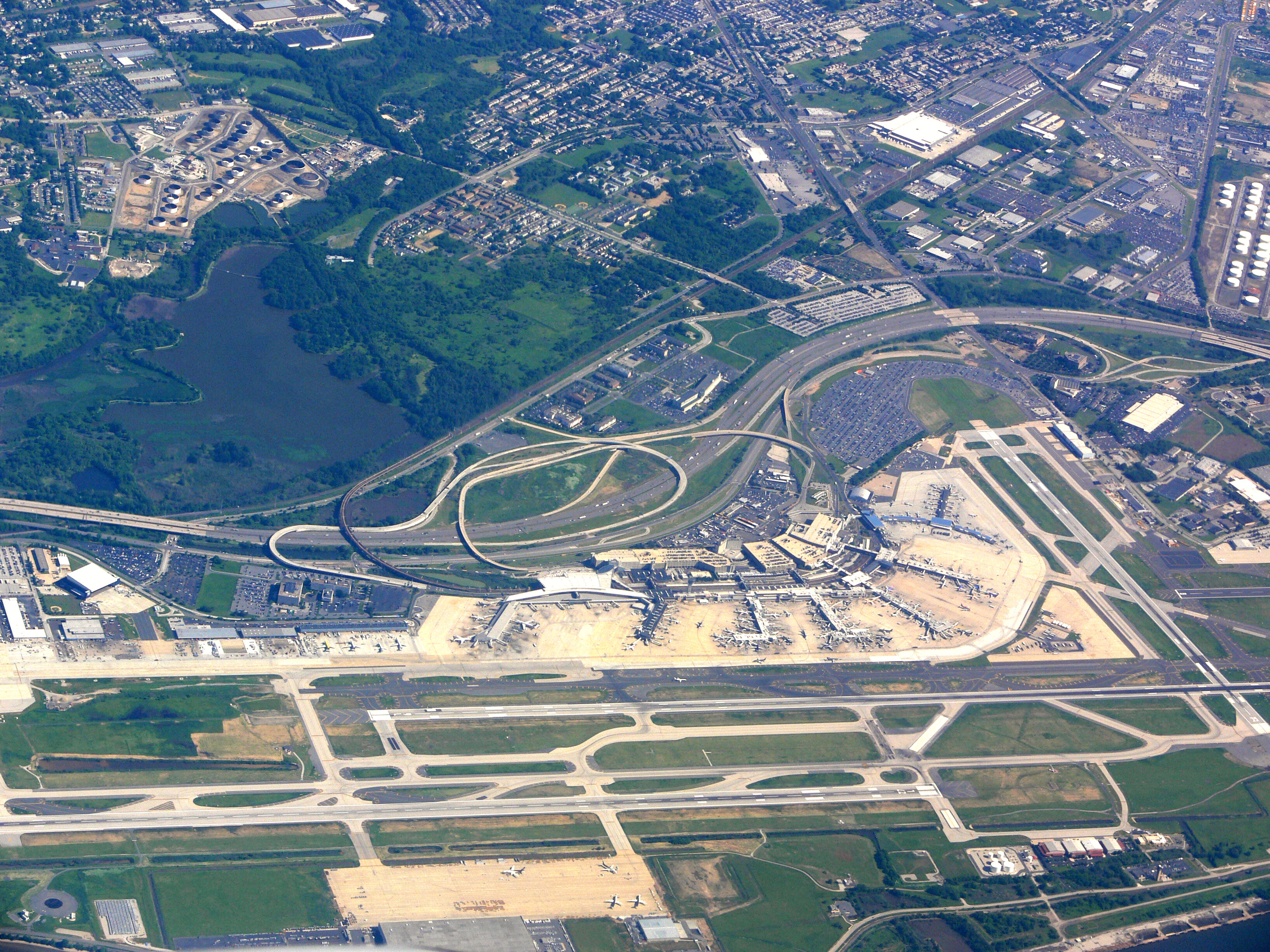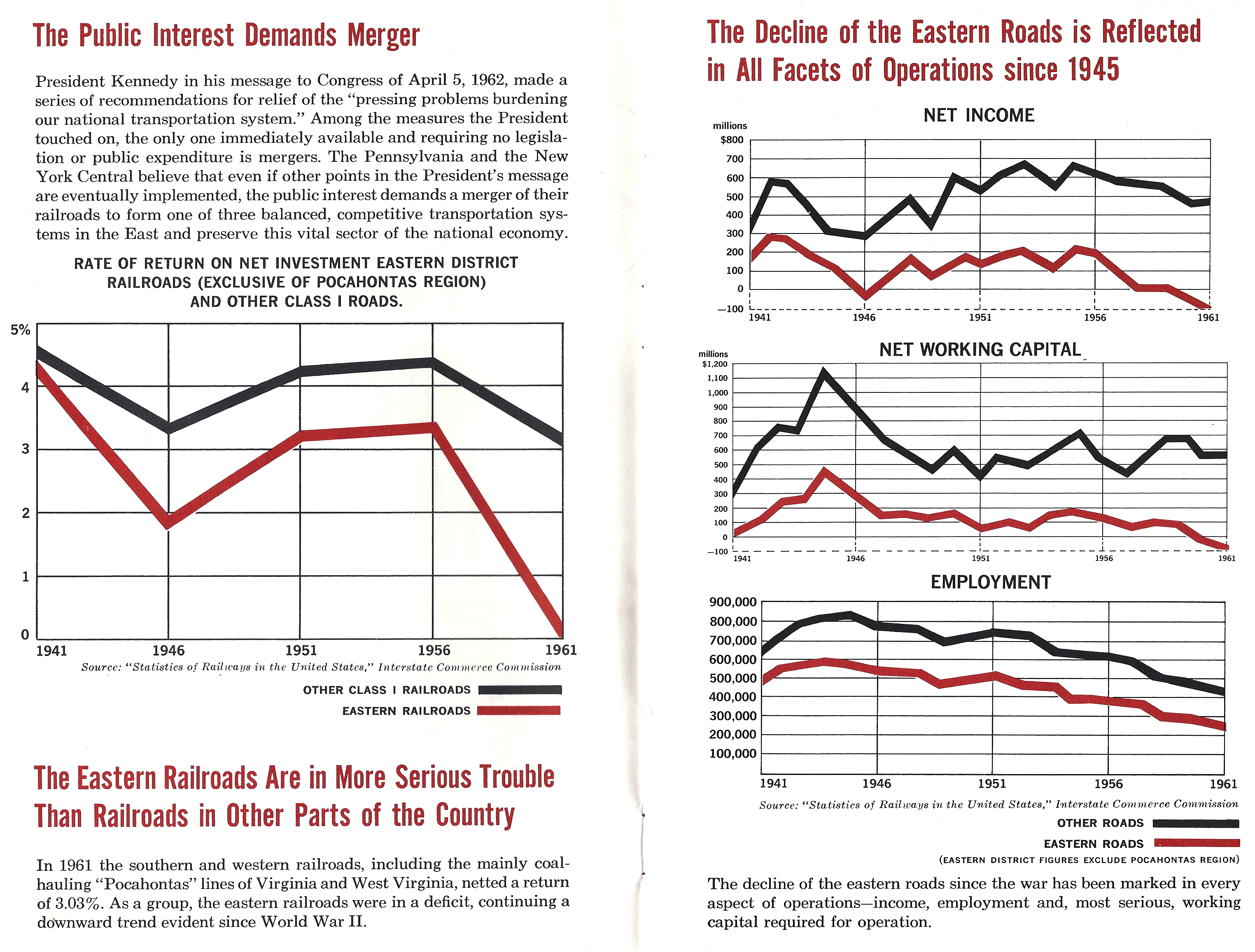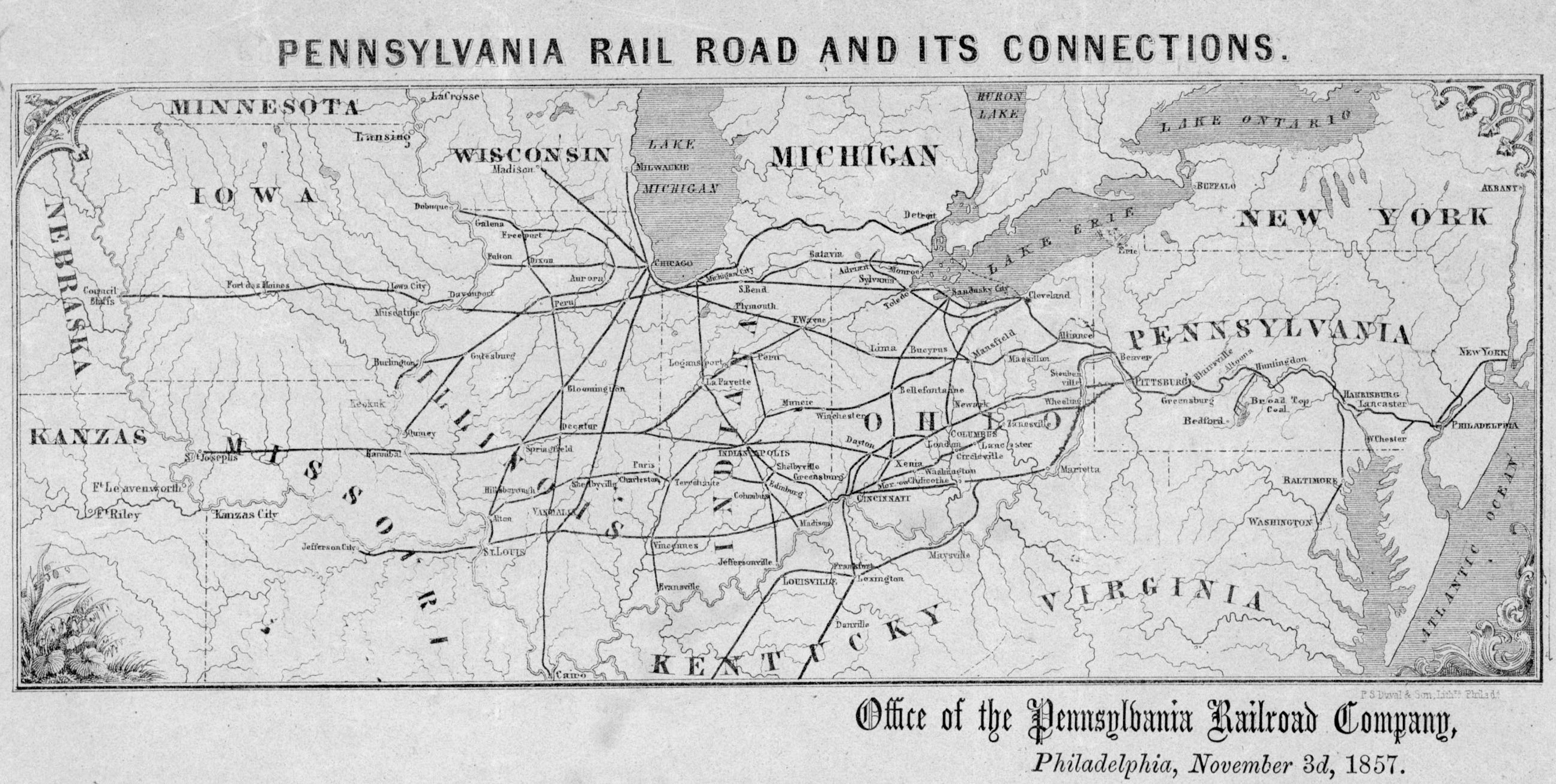|
SEPTA Regional Rail
The SEPTA Regional Rail system is a commuter rail network owned by SEPTA and serving the Philadelphia metropolitan area. The system has 13 branches and more than 150 active stations in Philadelphia, Pennsylvania, its suburbs and satellite towns and cities. It is the sixth-busiest commuter railroad in the United States. In 2016, the Regional Rail system had an average of 132,000 daily riders and 118,800 daily riders as of 2019. The core of the Regional Rail system is the Center City Commuter Connection, a tunnel linking three Center City stations: the above-ground upper level of 30th Street Station, the underground Suburban Station, and Jefferson Station. All trains stop at these Center City stations; most also stop at Temple University station on the campus of Temple University in North Philadelphia. Operations are handled by the SEPTA Railroad Division. Of the 13 branches, six were originally owned and operated by the Pennsylvania Railroad (PRR) (later Penn Central), ... [...More Info...] [...Related Items...] OR: [Wikipedia] [Google] [Baidu] |
30th Street Station
30th Street Station, officially William H. Gray III 30th Street Station, is a major intermodal passenger transport, intermodal transit station in Philadelphia, Pennsylvania, United States. The station opened in 1933 as Pennsylvania Station–30th Street, replacing the 1881 Broad Street Station (Philadelphia), Broad Street station as the Pennsylvania Railroad's main station in the city. The station is List of busiest Amtrak stations, third-busiest Amtrak station in the nation with over 4.1 million passengers as of 2023. 30th Street Station is currently Delaware Valley, metropolitan Philadelphia's main train station, railroad station and a major stop on Amtrak's Northeast Corridor, Northeast and Keystone Corridor, Keystone corridors. The station is also a major commuter rail station served by all SEPTA Regional Rail lines and is the western terminus for NJ Transit Rail Operations, NJ Transit's Atlantic City Line. The station is also served by several SEPTA-managed SEPTA City Tr ... [...More Info...] [...Related Items...] OR: [Wikipedia] [Google] [Baidu] |
Center City, Philadelphia
Center City includes the central business district and central neighborhoods of Philadelphia, Pennsylvania, United States. It comprises the area that made up the City of Philadelphia prior to the Act of Consolidation, 1854, which extended the city borders to be coterminous with Philadelphia County, Pennsylvania, Philadelphia County. The area has grown to the second-most densely populated downtown area in the United States (after Midtown Manhattan in New York City), with an estimated 202,000 residents in 2020 and a population density of 26,234 per square mile. Geography Boundaries Center City is bounded by South Street (Philadelphia), South Street to the south, the Delaware River to the east, the Schuylkill River to the west, and Vine Street to the north. The district occupies the old boundaries of the City of Philadelphia before Act of Consolidation, 1854, the city was made coterminous with Philadelphia County in 1854. The Center City District, which has special powers of taxa ... [...More Info...] [...Related Items...] OR: [Wikipedia] [Google] [Baidu] |
Chestnut Hill West Line
The Chestnut Hill West Line is a route of the SEPTA SEPTA Regional Rail, Regional Rail network. It connects Northwest Philadelphia, including the eponymous neighborhood of Chestnut Hill, Philadelphia, Pennsylvania, Chestnut Hill, West Mount Airy, Philadelphia, Pennsylvania, West Mount Airy, and Germantown, Philadelphia, Germantown, to Center City, Philadelphia, Center City. Route Chestnut Hill West Line trains originate at Temple University station, Temple University on the SEPTA Main Line. They use the Center City Commuter Connection to reach 30th Street Station. From there, they use the Northeast Corridor to reach North Philadelphia station, North Philadelphia, where the Chestnut Hill West Branch diverges from the Northeast Corridor. Its terminal is named Chestnut Hill West (SEPTA station), Chestnut Hill West to distinguish it from the end of the Chestnut Hill East Line (a competing line of the Reading Company until 1976, when Conrail assumed operations, SEPTA took over i ... [...More Info...] [...Related Items...] OR: [Wikipedia] [Google] [Baidu] |
Philadelphia International Airport
Philadelphia International Airport is the primary international airport serving Philadelphia, Pennsylvania, United States. It served 30.8 million passengers annually in 2024, making it the busiest airport in Pennsylvania and the 21st-busiest airport in the United States. The airport is located from the city's downtown area and has 22 airlines that offer nearly 500 daily departures to more than 130 destinations worldwide. The airport is the fifth-largest hub for American Airlines and serves as American Airlines' primary hub in the Northeastern United States and its primary European and transatlantic gateway. The airport is a regional cargo hub for UPS Airlines and a focus city for Frontier Airlines. The airport has service to cities in the United States, Canada, Mexico, the Caribbean, Europe, and the Middle East. As of 2019, the airport offers flights to 140 destinations, 102 of which are domestic and 38 of which international. Much of the airport property is in the city o ... [...More Info...] [...Related Items...] OR: [Wikipedia] [Google] [Baidu] |
Airport Line (SEPTA)
The Airport Line (formerly the R1 Airport) is a route of the SEPTA Regional Rail commuter rail system in Philadelphia, Pennsylvania, which officially runs between Philadelphia International Airport through Center City to Temple University station. In practice, however, only a few trains originate or terminate at Temple University; most are through routed with lines to the north after leaving the Center City Commuter Connection. Half of weekday trains are through routed with the Warminster Line, with the other half of weekday trains through routed with the Fox Chase Line. All weekend and holiday trains are through routed with the Warminster Line and terminate either in Warminster or Glenside. The line between Center City and the airport runs seven days a week from 5:00 am to midnight with trains every 30 minutes daily. The trip length from Suburban Station to the airport is 19 to 24 minutes. The line is fully grade-separated in the normal service, but one public grade cros ... [...More Info...] [...Related Items...] OR: [Wikipedia] [Google] [Baidu] |
Cynwyd Line
The Cynwyd Line is a SEPTA Regional Rail line from Center City, Philadelphia, Center City Philadelphia to Cynwyd (SEPTA station), Cynwyd in Montgomery County, Pennsylvania, Montgomery County, Pennsylvania. Originally known as the Ivy Ridge Line, service was truncated on May 17, 1986, at its current terminus at Cynwyd (SEPTA station), Cynwyd. Track between Cynwyd and Ivy Ridge (SEPTA station), Ivy Ridge was dismantled between 2008 and 2010 for conversion as an interim rail trail, preventing service restoration for the foreseeable future. The Cynwyd Line is the shortest of the SEPTA regional rail lines, and is the second-shortest regional rail line in the United States after New Jersey Transit, New Jersey Transit's Princeton Branch. It is by far the least ridden SEPTA Regional Rail Line. It is fully Grade separation, grade-separated. Route The Cynwyd Line runs from Suburban Station to the 52nd Street Junction, where it diverges from Amtrak's Philadelphia to Harrisburg Main Line, ... [...More Info...] [...Related Items...] OR: [Wikipedia] [Google] [Baidu] |
Reading Terminal
The Reading Terminal ( ) is a complex of buildings that includes the former Reading Company main railroad station, station located in the Market East, Philadelphia, Pennsylvania, Market East section of Center City, Philadelphia, Center City in Philadelphia, Pennsylvania, United States. It comprises the Reading Terminal Headhouse, Trainshed, and Reading Terminal Market, Market. History Construction In 1889, the Philadelphia and Reading Railway decided to build a train depot, passenger station, and company headquarters on the corner of 12th and Market Streets. The move came eight years after the Pennsylvania Railroad opened its Broad Street Station (Philadelphia), Broad Street Station several blocks away at 15th and Market Streets, and one year after the Baltimore and Ohio Railroad opened its 24th Street Station (Philadelphia), 24th Street Station at 24th and Chestnut Streets. The chosen location was occupied by an open-air market that had been in continuous operation since 1853. ... [...More Info...] [...Related Items...] OR: [Wikipedia] [Google] [Baidu] |
Reading Company
The Reading Company ( ) was a Philadelphia-headquartered railroad that provided passenger and freight transport in eastern Pennsylvania and neighboring states from 1924 until its acquisition by Conrail in 1976. Commonly called the Reading Railroad and logotyped as Reading Lines, the Reading Company was a railroad holding company for most of its existence, and a single railroad in its later years. It operated service as Reading Railway System and was a successor to the Philadelphia and Reading Railway Company, founded in 1833. Until the decline in anthracite shipments from the Coal Region in Northeastern Pennsylvania following World War II, it was one of the most prosperous corporations in the United States. Enactment of the federally-funded Interstate Highway System in 1956 led to competition from the modern trucking industry. They used the Interstates for short-distance transportation of goods, which compounded the company's competition for freight business, forcing it into ba ... [...More Info...] [...Related Items...] OR: [Wikipedia] [Google] [Baidu] |
Penn Central
The Penn Central Transportation Company, commonly abbreviated to Penn Central, was an American class I railroad that operated from 1968 to 1976. Penn Central combined three traditional corporate rivals, the Pennsylvania, New York Central and the New York, New Haven and Hartford railroad, each of which were united by large-scale service into the New York metropolitan area and to a lesser extent New England and Chicago. The new company failed barely two years after formation, the largest bankruptcy in U.S. history at the time. Penn Central's railroad assets were nationalized into Conrail along with those of other bankrupt northeastern railroads; its real estate and insurance holdings successfully reorganized into American Premier Underwriters. History Pre-merger The Penn Central railroad system developed in response to challenges facing northeastern American railroads during the late 1960s. While railroads elsewhere in North America drew revenues from long-distance shipment ... [...More Info...] [...Related Items...] OR: [Wikipedia] [Google] [Baidu] |
Pennsylvania Railroad
The Pennsylvania Railroad ( reporting mark PRR), legal name as the Pennsylvania Railroad Company, also known as the "Pennsy," was an American Class I railroad that was established in 1846 and headquartered in Philadelphia, Pennsylvania. At its peak in 1882, the Pennsylvania Railroad was the largest railroad (by traffic and revenue), the largest transportation enterprise, and the largest corporation in the world. Over its existence, Pennsylvania Railroad acquired, merged with, or owned part of at least 800 other rail lines and companies. At the end of 1926, it operated of rail line;This mileage includes companies independently operated. PRR miles of all tracks, which includes first (or main), second, third, fourth, and sidings, totalled 28,040.49 at the end of 1926. in the 1920s, it carried nearly three times the traffic as other railroads of comparable length, such as the Union Pacific and Atchison, Topeka & Santa Fe railroads. Its only formidable rival was the New York Centra ... [...More Info...] [...Related Items...] OR: [Wikipedia] [Google] [Baidu] |
North Philadelphia
North Philadelphia, nicknamed North Philly, is a section of Philadelphia, Pennsylvania. It is immediately north of Center City, Philadelphia, Center City. Though the full extent of the region is somewhat vague, "North Philadelphia" is regarded as everything north of either Vine Street or Spring Garden Street, between Northwest Philadelphia and Northeast Philadelphia. It is bordered to the north by Olney Ave along Broad Street, Spring Garden Street to the south, 35th Street to the west and Adams Avenue to the east. The Philadelphia Police Department patrols five districts located within North Philadelphia: the 22nd, 25th, 26th, 35th and 39th districts. There are thirteen ZIP Codes for North Philadelphia: 19120, 19121, 19122, 19123, 19125, 19126, 19130, 19132, 19133, 19134, 19137, 19140 and 19141. The city government views this sprawling chunk of Philadelphia more precisely as three smaller districts, drawn up by the Redevelopment Authority in 1964. These regions are (from north to ... [...More Info...] [...Related Items...] OR: [Wikipedia] [Google] [Baidu] |
Temple University
Temple University (Temple or TU) is a public university, public Commonwealth System of Higher Education, state-related research university in Philadelphia, Philadelphia, Pennsylvania, United States. It was founded in 1884 by the Baptist minister Russell Conwell and his congregation at the Grace Baptist Church of Philadelphia, then called Baptist Temple. Today, Temple is the List of colleges and universities in Pennsylvania, second-largest university in Pennsylvania by enrollment and awarded 9,128 degrees in the 2023–24 academic year. It has a worldwide alumni base of 378,012, with 352,175 alumni residing in the United States. The university consists of 17 schools and colleges, including five professional schools, offering over 640+ academic programs and over 160 undergraduate majors. about 30,005 undergraduate, graduate and professional students were enrolled at the university. It is Carnegie Classification of Institutions of Higher Education, classified among "R1: Doctoral U ... [...More Info...] [...Related Items...] OR: [Wikipedia] [Google] [Baidu] |










